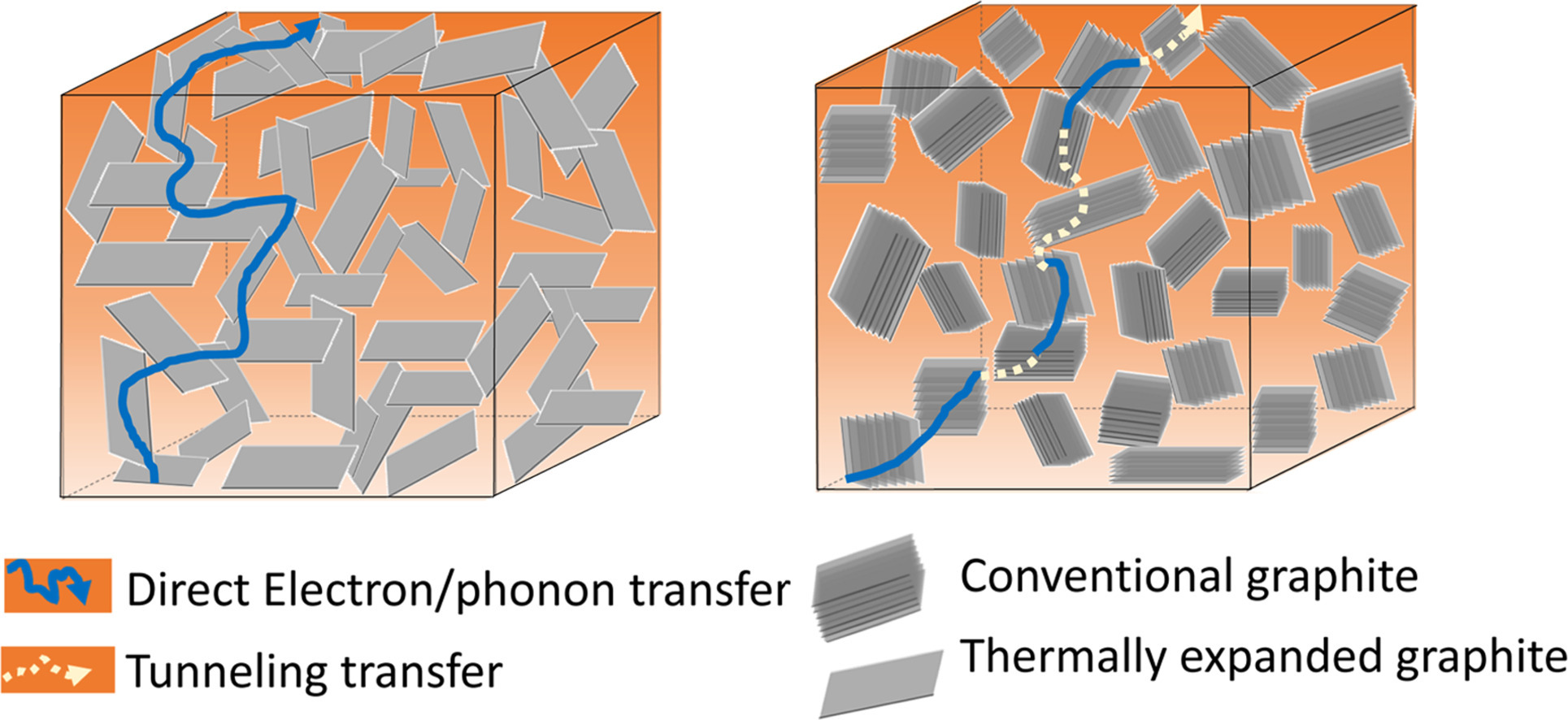
This work investigated a method for producing epoxy-based composites using various graphite fillers, such as natural, synthetic, and thermally expanded graphite. The study aimed to determine the impact of the filler type, size, and volume fraction on the composites’ thermal and electrical conductivity. Results indicate that the percolation model accurately represents electrical and thermal conductivity behavior, with graphite fillers forming conductive clusters in the polymer matrix. The percolation threshold for electrical conductivity varies between 2.8 and 8.5 vol.%, while for thermal conductivity, it ranges from 5.0 to 18.0 vol.%, which is twice that of electrical conductivity. This observation is due to both the electron transfer tunneling effect and the necessity of higher filler content to facilitating effective phonon transport. Notably, composites filled with thermally expanded graphite exhibit lower percolation thresholds. Understanding percolation behavior facilitates the prediction and optimization of composites with specific electrical and thermal properties for diverse applications.
More info can be found here: https://www.sciencedirect.com/science/article/abs/pii/S0025540824005166.
© 2021 Matematicko-fyzikální fakulta Univerzity Karlovy.
Všechna práva vyhrazena. | Cookies